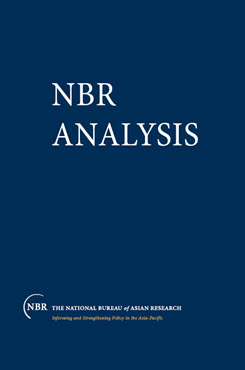NBR Analysis vol. 11, no. 5
The Balance of Power and U.S. Foreign Policy Interests in the Russian Far East
This essay is an important case study on the ability of bureaucratic organs in the region to carry out critical security policies determined by Moscow and to lessen the threat to nuclear security posed by nuclear regionalism.
The Russian Far East is of great significance to the economic well–being and security of Northeast Asia. The region has an area of 6.2 million square kilometers—well over one–fourth of the Russian Federation’s total area and three–fourths the size of the contiguous United States. By contrast, its population, at less than eight million, is just over five percent of the Russian Federation’s total population. It lies nine time zones to the east of Moscow and is connected to the Russian heartland by communications links that are long, few in number, and vulnerable to boot, yet its wealth in energy and various industrial raw materials is abundant. It is located next to China, a rising power, and the Korean Peninsula, a potential flashpoint, and it overlooks Japan, the world’s second largest economy.
The size, remoteness, and strategic salience of the Russian Far East raise the question of Moscow’s ability to control and defend this region, the more so given a Russian government so hobbled by economic and military weakness that it can use neither fear nor favors to control its outlying regions. Under these circumstances, the fate of the Russian Far East is of great concern to Moscow. [1] For their part, residents of the Russian Far East tend to believe that Moscow has little to offer them, and that its priorities and concerns are becoming progressively disassociated from theirs.
What will be the denouement? One possibility is heightened tensions between Moscow and the Russian Far East, with Moscow seeking—ineffectually—to retain control, but unable to offer incentives to obey or disincentives to disobey by virtue of its economic and military weakness. Another possible outcome is that the leaders of the Russian Far East, facing pressure from Moscow, increased immigration from China, and growing Chinese power, may conclude that ties to the central government in Moscow and to the rest of Russia are critical to counterbalance Chinese hegemony and territorial claims. In addition to looking to the central government as a counterbalance, political leaders in the Russian Far East could seek to fan Russian nationalism, both in response to the perceived threat from China and as a means of promoting their political legitimacy. A third possible outcome is that the growth of Chinese military and economic power, combined with the decline and disunity of Russia, may lead the Russian Far East to be absorbed into a Chinese sphere of influence…
[1] See Tsuneo Akaha, ed., Politics and Economics in the Russian Far East: Changing Ties with the Asia-Pacific, London: Routledge, 1997, especially the chapters by Vladimir Ivanov.


